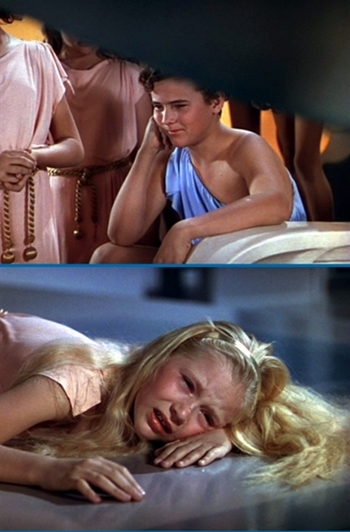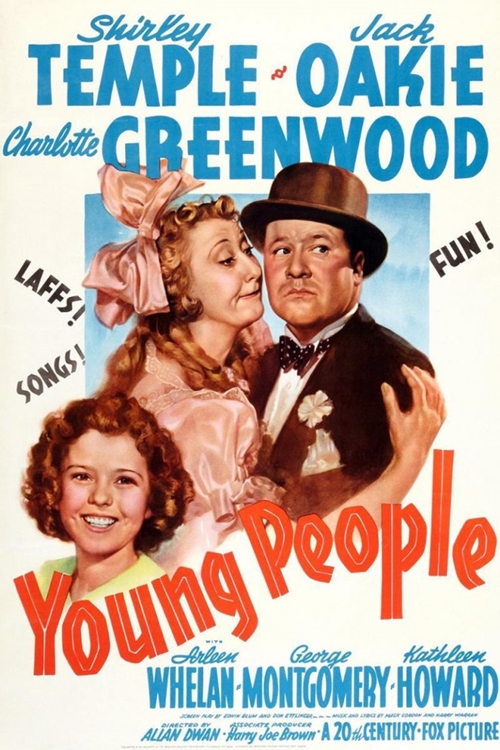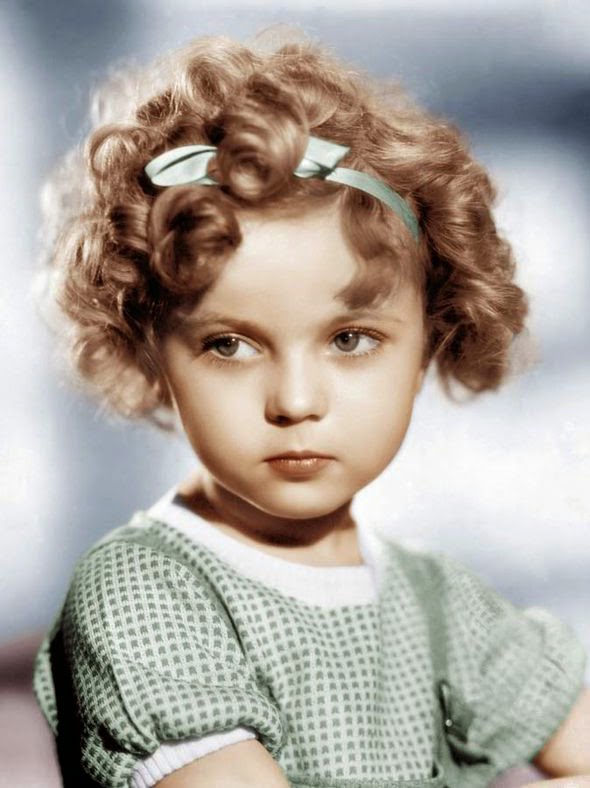Continuing with
London After Midnight by Marie Coolidge-Rask:
Chapter 10 – A Question of Vampires
The howling of the dog, coming from the direction of Balfour House, continues as Sir James and Yates make their way home from the crypt. They recount their experience to Hibbs, and the three discuss aspects of vampire lore as written in Colonel Yates’s book. Since murdered men and suicides are supposedly liable to become vampires, and since Roger Balfour’s coffin was still undisturbed at the time of Harry’s interment, it is cautiously suggested that the son’s unsolved murder may have had some supernatural effect on Roger Balfour’s restless soul. Sir James is clearly rattled by the night’s experience; Hibbs and Yates realize that there is some unknown factor at work over in Balfour House, and the mystery seems to deepen with every new event. It is near dawn when Sir James and Colonel Yates go to bed. Hibbs steals back downstairs to the library for further study of Colonel Yates’s book.
Chapter 11 – Harrowing Tales
All three men rise late the next day, leaving Lucy feeling quite lonely in the house, oppressed in the heat that has been intensified, rather than dispelled, by the early-morning electrical storm. At dinner that evening, conversation is kept trivial; by tacit agreement among the three men, Lucy is given no hint of what happened the night before.
Later that night, after Lucy has gone to her room, the three men resume their discussion of the night before. Suddenly they hear a piercing scream from upstairs, in the direction of Lucy’s room. Rushing upstairs, they find Lucy’s door locked. They try to break down the door, but before they have to, the door opens. In the room they find Smithson, the maid, trembling and sobbing, her eyes wide with fear, two small wounds at her throat, similar to the ones seen on the body of Harry Balfour. Sobbing, she tells the men that Lucy is locked in her dressing room, and they release the confused and frightened young lady from her confinement.
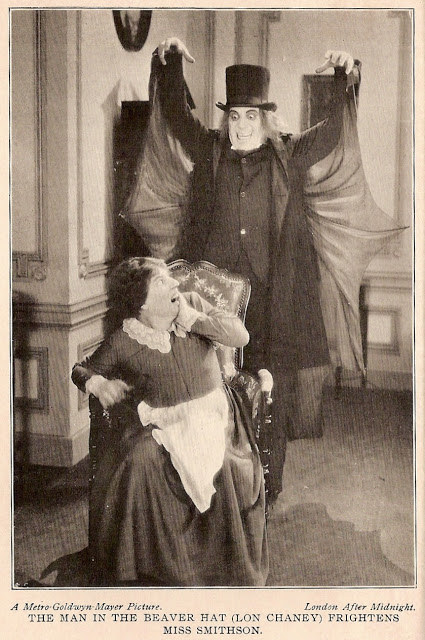
Finally, Smithson pulls herself together and tells the men what happened. As Miss Lucy was getting ready for bed, she says, she left her to fetch some towels from the linen closet. In the hallway she saw the man in the beaver hat, the one she saw on the steps of Balfour House as she was passing the night before. The man was stooped over and creeping toward her, his skeletal hand outstretched, his spiky teeth gleaming. Smithson was too frightened even to scream.
Thinking of Miss Lucy, Smithson says, she rushed back to the young lady’s room, shoved Lucy into the dressing room and locked her in. Then she locked the door to the outer room and thought they were safe. But before her horrified eyes, a green mist streamed through the keyhole and formed itself into the man in the beaver hat. The man came to her; she was unable to speak or scream, or even move. She felt him bending over her, felt his teeth on his throat. That must have been when she screamed, she says, but she doesn’t remember it. She knew nothing more until she heard Sir James, Colonel Yates and Hibbs pounding at the still-locked door.
Lucy, greatly excited, calls their attention to the window, where all of them see the man in the beaver hat skulking across the grounds in the direction of Balfour House. Colonel Yates tells Hibbs to remain with Lucy and see that she is not left alone; he and Sir James will investigate the matter further.
Chapter 12 – Panic
Left alone with Lucy and Hibbs, Smithson realizes that the two young people (whose feelings for each other have not escaped her notice) wish to be alone, so she tells them she is going down to the kitchen; after her experience she could use a nice cup of hot tea. Downstairs she finds the servants — butler, housekeeper, cook, maids and footmen — cowering in the kitchen, wondering about all the commotion earlier but afraid to go and see what it was. They mill around her, clamoring for news. Deciding she could use something a little stronger than tea, Smithson asks Billings, the butler, for “a little drop of spirits.” Thus fortified, she proceeds to regale the servants with another recounting of her experience in Lucy’s room, this one much embellished for dramatic effect as Smithson relishes the attentions of her rapt and horrified audience. At this inopportune moment, a cat knocks over a tin pan from the sink onto the floor; the sudden clatter sends the servants into an uproar. Upstairs, Lucy and Hibbs hear the melee downstairs and wonder what can possibly happen next.
Chapter 13 – The Woman on the Ceiling
Colonel Yates and Sir James make their way to Balfour House, proceeding slowly by a roundabout route, pausing frequently to watch and listen for prowlers or anything untoward. Once again Sir James’s heart is racing, and once again he depends entirely on the resoluteness of Colonel Yates to keep him going.
It is well after midnight when they approach Balfour House. The house is dark, but they can see a faint light glimmering from one of the upper windows — in fact from the “secret chamber” that has been unoccupied for centuries, the one in which a woman’s ghost is said to roam. Slowly forcing their way through the tangled grass and foliage of the overgrown grounds, they find a large tree from which they should be able to see into the lighted chamber. Taking the lead as usual, Yates climbs into the tree. At that moment they hear, low but clearly audible, the insistent sobbing of a woman in despair.
Through the high windows of the secret room they can see only the ceiling and the upper walls inside. There they behold a sight that confounds them. By the dim light inside, they see a mysterious shape in the secret room — now sharp and clear, now blurry and indistinct, now rising to the ceiling, now swooping below the level of the windows, now contracting, now expanding as if carried by huge bat-like wings. At one point the apparition turns its head to the light, and the two men clearly see the profile of a woman — a woman hovering and swooping high in the secret room on the wings of a bat!
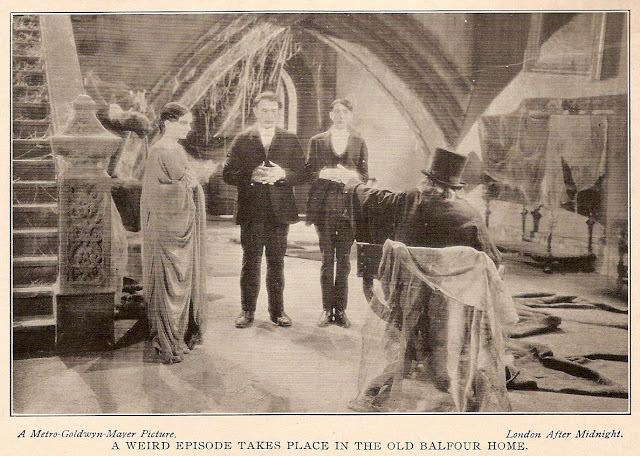
From their perch in the tree they are able to step gingerly and noiselessly onto a narrow balcony by one of the windows, from which they have a wider view of the room. They see three men, all with a ghastly pallor to their faces, absorbed in watching the movements of the bat-woman over their heads. One of them is the man in the beaver hat. Another is unidentifiable, but the third man, as Sir James confirms in a trembling whisper, is Roger Balfour.
The bat-woman, where she hovers near the ceiling, turns her face toward the window, her eyes intent, as if to pierce the darkness beyond. Yates and Sir James take an involuntary step back into the shadows. The figure of Roger Balfour also turns to the window, his eyes keenly searching, his face ghostly pale, a small open wound crusted and discolored at his temple. Sir James shudders.
Colonel Yates whispers that they have seen enough for one night, and Sir James readily agrees. They stealthily return to the tree and cautiously climb back down to the ground. Sir James is highly agitated. In a distraught whisper he urges that they return at once to Hamlin House; God only knows what has happened to Lucy in their absence. In a sudden flash of insight, Colonel Yates realizes that Sir James’s feelings for Lucy are not merely those of a guardian for his ward.
From a rise a little distance from Balfour House they look back. In the dim light of the upper window they see a shape standing at the window, and they hear a voice, low and plaintive, calling: “Lucy — Lucy — Lucy — “
Chapter 14 – By the Light of Day
Sir James spends a sleepless night, his mind going over and over the weird events of the night and the uncanny things he and Colonel Yates have seen. The next day at noon, Lucy, alarmed at his tired and ill appearance, asks him what happened while he and the colonel were out. Feeling it best to keep her unaware, he says that they were unsuccessful in their attempt to follow the man in the beaver hat; he had eluded them, and their long walk was for nothing.
Sir James and Colonel Yates decide to return to Balfour House by daylight; they tell Hibbs that if they are not back in an hour he should send a party in search of them. Under the hot summer sun on a cloudless day, Balfour House looks impressive and looming, but empty and unthreatening. Sir James wonders, was what they saw the night before merely a figment of their imaginations? No, says Yates; they saw what they saw, but what it can mean is impossible to say. Sir James is not reassured.
They knock at the door, but there is no answer. Entering cautiously, they see no signs of occupancy, no disturbance in the dust on the tables, chairs and floor. The door to the secret room is still locked and bolted, the lock rusted and untouched. As they creep from room to room, searching, Sir James again has the unsettling feeling he had on the night they visited the Balfour crypt, that some unseen presence is following them, watchful.
As they enter the library, the room in which Roger Balfour died five years ago, a strange sight greets them: High in a corner of the ceiling are a group of five bats, hanging in silent slumber.
Chapter 15 – Two Suitors
Back at Hamlin House, Lucy waits for Colonel Yates in the rose garden; she has promised to give him a tour of the garden and a description of the blooms cultivated there. Hibbs scolds her for being alone, even in the daytime. She laughs, saying she wishes she had seen the man in the beaver hat herself; she’d have captured him! Hibbs, realizing she has been kept in the dark as to the extent of her danger, restrains himself from telling more than he should.
Sir James and Colonel Yates come into the garden. As they discuss what to do about the previous night’s events, Yates notices the flash of suspicion on Sir James’s face at the apparent intimacy between Hibbs and Lucy. Yates urges Sir James to ask Scotland Yard to investigate Balfour House; involving the local police, he says, could lead to unwanted and harmful gossip, but the Yard is renowned for its discretion. Have Hibbs write Scotland Yard, he says, asking them to send several good, able-bodied men — “men who are not afraid of man, ghost or devil” — under cover of darkness.
Sir James and Hibbs go into the house to draft the letter, leaving Yates and Lucy to their tour of the garden. As they chat, Lucy confides something she has never told anyone, not even her brother Harry: When she was a little girl, she was strangely afraid of Sir James, although she never knew exactly why; he was always so good to her. And since her father’s death, he has been kindness itself; she feels she could never repay him for all he has done for her and Harry.
Colonel Yates assures her that he understands. He tells her that he wants to have “a serious talk” with her, on a matter that concerns her closely.
From the house, Hibbs watches Lucy and the colonel in the garden. He sees Lucy throw her arms around Colonel Yates and kiss his cheek, then begin weeping on his shoulder. His jealousy flares, and it is with difficulty that Sir James recalls him to the task of writing Scotland Yard.
Later, Hibbs confronts Lucy and demands an explanation. She cannot say anything, she says, and begs him not to ask. But she mollifies him by assuring him that she intends to break the news to Sir James of her and Hibbs’s feelings for one another.
Lucy finds Sir James in the music room, as eager to speak with her as she is with him. Sir James wonders: Has Lucy been annoyed by the unwanted attentions of his secretary? No, not at all, she assures him. Before she can go on, he tells her he is glad to hear it. Hibbs could never support Lucy in a way to which she is entitled. On the other hand, he — Sir James himself — has long looked forward to making Lucy his wife.
Surprised and alarmed, Lucy runs sobbing from the room.
Chapter 16 – Exorcisms
Sir James and Colonel Yates find a passage in Yates’s book: “A wreath of tube roses at the window, a sword across the door, will make it impossible for the Vampyr to enter a sleeping room at night.” It may sound absurd, but after the past two nights nothing should be discounted; at least it can do no harm.
Hibbs is tense and upset as they place a wreath of tube roses from the garden and a sword that had hung on the wall, according to the directions in the book; lack of sleep, concern for Lucy, and mistrust of Yates are taking their toll. Reading from the book, he speaks the prescribed incantation: “They shall not pass this threshold.”
As everyone retires for the night, Yates draws Hibbs into the upstairs study, saying he has something to tell him. Ignoring the smoldering anger in Hibbs’s eyes, Yates guides him to a chair and gently forces him to sit. He tells him that Lucy’s love for Hibbs speaks well of him, that Yates can see through her eyes what a fine fellow Hibbs is.
All thought of Yates as a rival is suddenly gone from Hibbs’s mind. In the colonel’s steady gaze he sees the eyes of a friend and feels an urge to confide in him. Too bad about Lucy’s brother, Yates says; did he and Hibbs get along? Ruefully, Hibbs says no, Harry objected to Hibbs’s love for Lucy and was resolved to separate them for good.
As they talk, Hibbs is overcome with drowsiness. He sleeps.
Chapter 17 – An Assassin Foiled
Midnight. The house is still. A crouching, shadowy figure moves stealthily to the door of one of the sleeping rooms. Slowly, silently, the figure turns the knob, opens the door and slips inside. The figure approaches the sleeper in the bed, in its hand a long thin object, gleaming in the dim moonlight from the window.
As the figure is poised to strike, the sleeper lunges bolt upright, startling the attacker to flight — out the door, down the hall, with the intended victim — none other than Colonel Yates — in pursuit. Yates fires his revolver at the fleeing figure, rousing the house. Lucy calls from inside her room, asking that someone remove the sword and let her out.
Sir James comes from his room, his hands shaking as he ties the belt of his robe. What was that? Nothing, says Yates; I must have had a nightmare. Sir James and Lucy are reassured, and the house settles down.
Alone again in the hall, Yates reflects that Hibbs did not appear after the gunshot. He kneels and searches the carpet. Finally he finds what he seeks: a spot of blood. His assailant did not escape untouched after all.
Yates makes sure that Lucy’s room is still secured with the sword and tube roses, then goes to Hibbs’s room. The door is open, the bedclothes rumpled, but the room is empty. Yates deftly makes up the bed, then goes into the study, where he finds Hibbs, still sound asleep in the chair where he dozed off while they talked.
Chapter 18 – The Fallen Sword
Upon being awakened, Hibbs apologizes for his rudeness in dropping off. Don’t mention it, says Yates; on the contrary, I apologize for keeping you up so late. Yates leaves Hibbs in the study, telling him they both should be in bed.
Hibbs looks at his watch. Two-thirty! Have they really been talking so long? He hardly remembers a word they said. Before retiring, he decides to check on Lucy’s room. He is horrified to find the protecting sword missing. He pounds on the door, calling her name.
Sir James appears, alarmed at Hibbs’s display — and outraged that he addresses Lucy by her first name. Colonel Yates joins them and they break in the door to Lucy’s room. It’s empty. She’s gone.
Finally the strain of the past few days has its way, and something in Hibbs snaps. He becomes hysterical, babbling that “vampyrs” have taken Lucy, that they must all be destroyed. Colonel Yates tries to calm him, to no avail. As Hibbs runs off, delirious, there comes from the direction of Balfour House the wild, piercing scream of a woman in distress. Could that have been Lucy?
No, says Gallagher, Sir James’s Irish chauffeur. That wasn’t Miss Lucy; ’twas the wail of “the banshee o’ Balfour House,” foretelling tragedy to come.



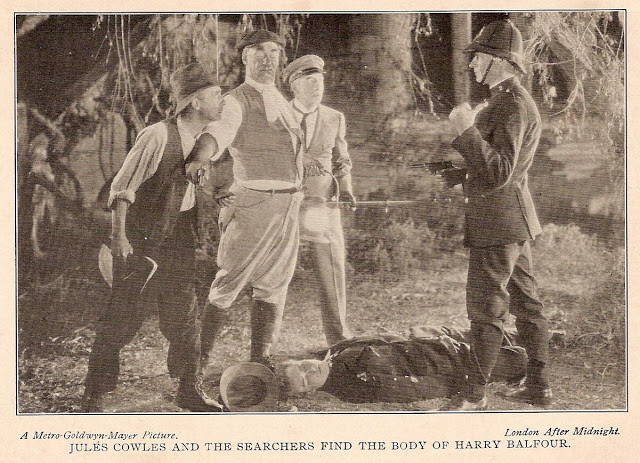
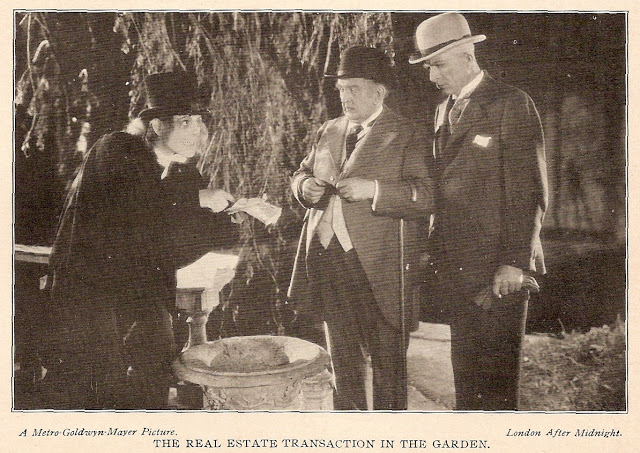
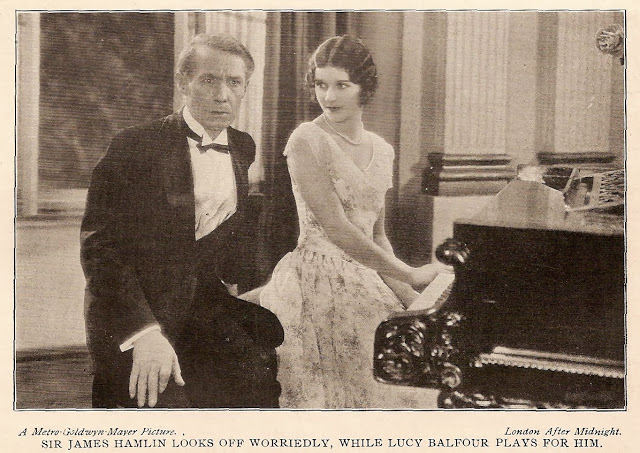


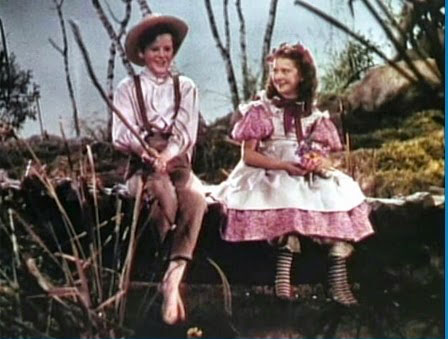
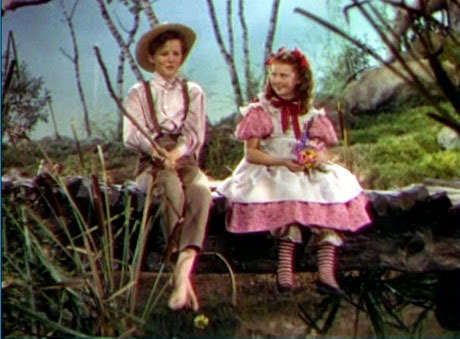
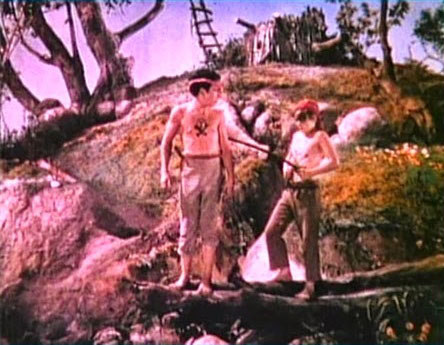
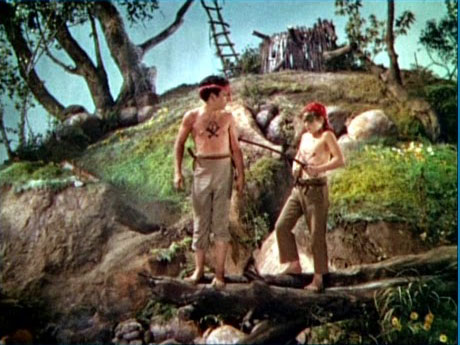
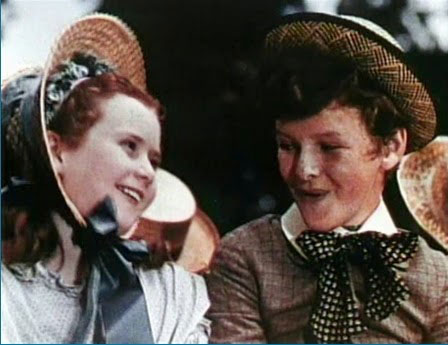
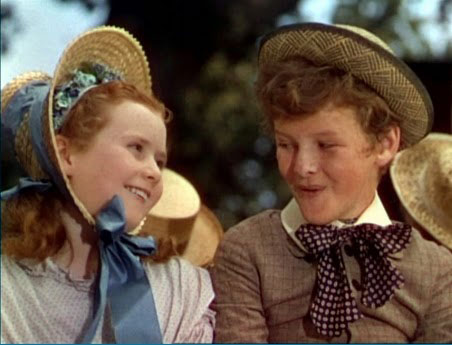
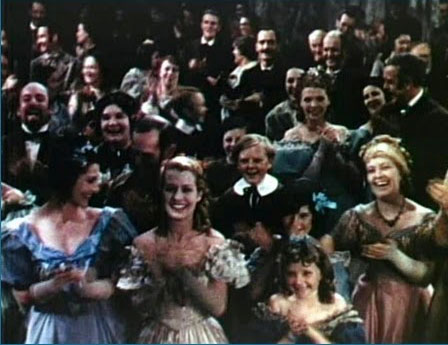

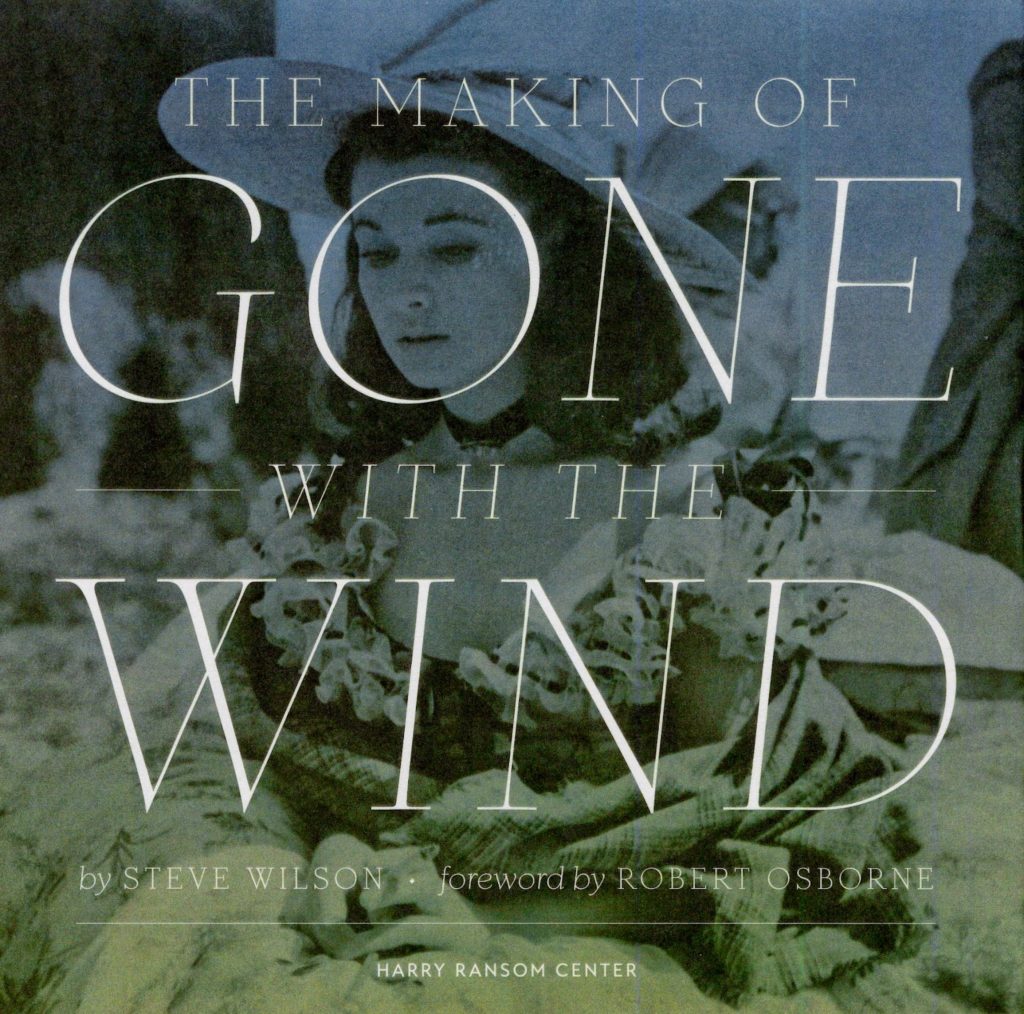
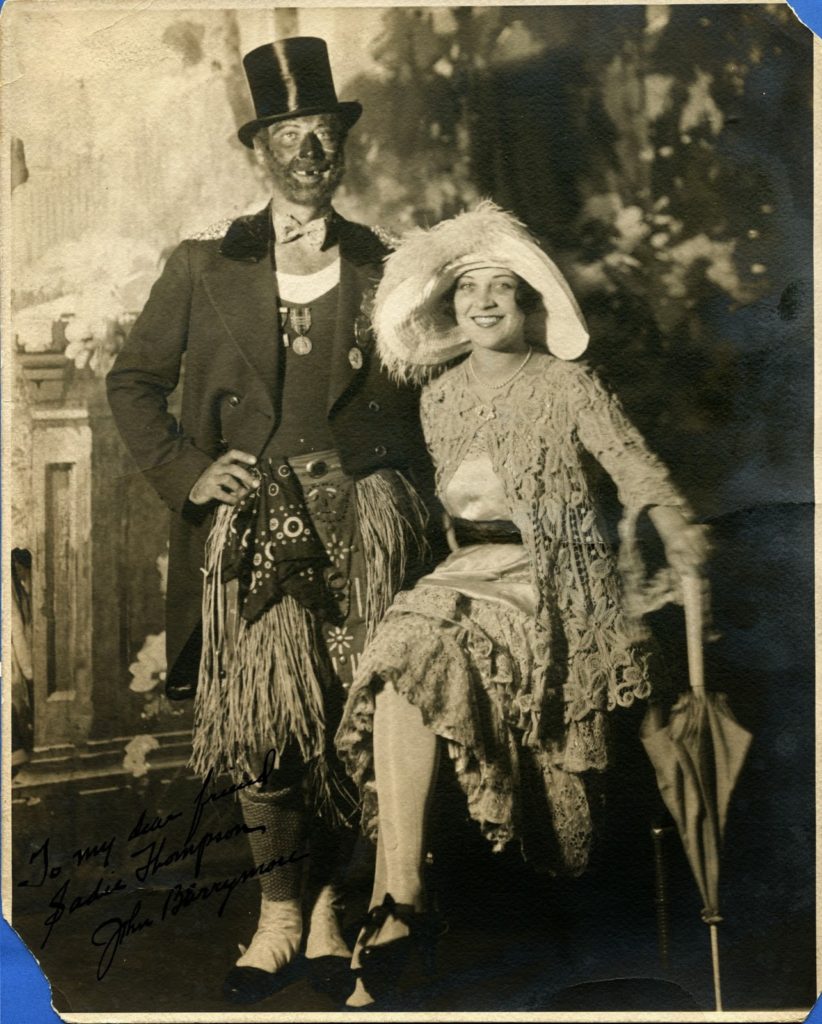

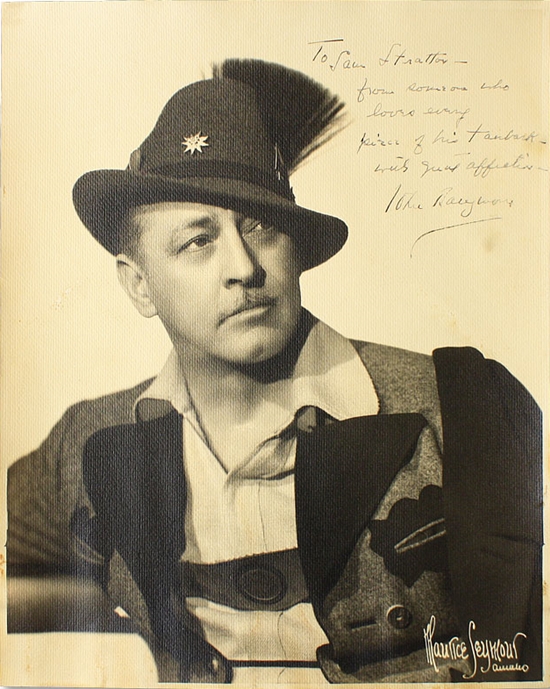 Today I received this picture from historian Richard M. Roberts, who states conclusively — and I’m convinced — that my picture isn’t John Barrymore after all. Richard’s message:
Today I received this picture from historian Richard M. Roberts, who states conclusively — and I’m convinced — that my picture isn’t John Barrymore after all. Richard’s message:
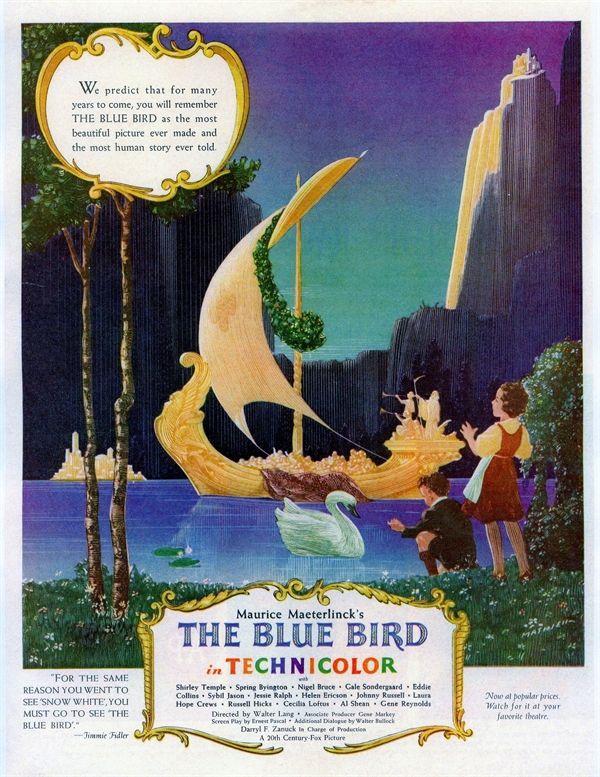 The Blue Bird was Shirley’s second brush with a Nobel Prize winner, after Rudyard Kipling and Wee Willie Winkie. Belgian poet, essayist and playwright Maurice Maeterlinck (1862-1949) was a leading proponent of the Symbolist movement in European art and literature of the late 19th century. His most influential and commercially successful play was probably Pelleas and Melisande (1893), a doomed-lovers tragedy that inspired numerous operas, all of which are performed these days far more often than the original play.
The Blue Bird was Shirley’s second brush with a Nobel Prize winner, after Rudyard Kipling and Wee Willie Winkie. Belgian poet, essayist and playwright Maurice Maeterlinck (1862-1949) was a leading proponent of the Symbolist movement in European art and literature of the late 19th century. His most influential and commercially successful play was probably Pelleas and Melisande (1893), a doomed-lovers tragedy that inspired numerous operas, all of which are performed these days far more often than the original play. Or trying to. The Blue Bird‘s greatest faults are inherent in Maeterlinck’s play; this was one case where Fox might have been justified in jettisoning everything but the title. Instead, Ernest Pascal’s script made an honest effort (with moderate success) to streamline, simplify and motivate the wild excesses of Maeterlinck’s fantasy. First, merely as a practical matter, the birth order of the lead siblings was reversed, making Mytyl (Shirley) the older and Tyltyl (Johnny Russell) the younger. The size of their expedition was streamlined, with their only companions being the cat Tylette (Gale Sondergaard, right) and dog Tylo (Eddie Collins, next to her). Of Maeterlinck’s five spirits, only Light remained (played by Helen Ericson), and she served, logically enough, as the children’s guide on their quest. (The group is shown here as they set out, with Jessie Ralph as Berylune on the left.)
Or trying to. The Blue Bird‘s greatest faults are inherent in Maeterlinck’s play; this was one case where Fox might have been justified in jettisoning everything but the title. Instead, Ernest Pascal’s script made an honest effort (with moderate success) to streamline, simplify and motivate the wild excesses of Maeterlinck’s fantasy. First, merely as a practical matter, the birth order of the lead siblings was reversed, making Mytyl (Shirley) the older and Tyltyl (Johnny Russell) the younger. The size of their expedition was streamlined, with their only companions being the cat Tylette (Gale Sondergaard, right) and dog Tylo (Eddie Collins, next to her). Of Maeterlinck’s five spirits, only Light remained (played by Helen Ericson), and she served, logically enough, as the children’s guide on their quest. (The group is shown here as they set out, with Jessie Ralph as Berylune on the left.)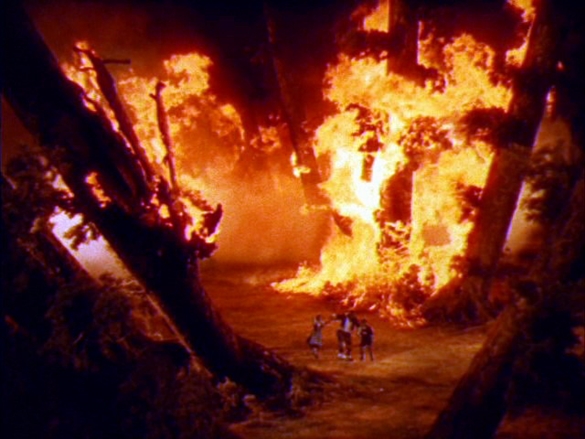 There follows another departure from Maeterlinck. After they escape from The Luxurys, the children must pass through a great forest. Tylette, hoping to rid herself of the children and thus gain her freedom, runs ahead of them and incites the trees (represented by Edwin Maxwell, Sterling Holloway and others) to avenge themselves on the children of the woodcutter who is always chopping them down. The trees take the bait, even calling on their old enemies lightning and fire — so eager are they to destroy the children that they willingly immolate themselves in a great forest fire. Tylette, however, has outsmarted herself; trying to lure the children to their doom, she is herself burned to death, and only the courageous efforts of the loyal Tylo enables the children to escape to safety.
There follows another departure from Maeterlinck. After they escape from The Luxurys, the children must pass through a great forest. Tylette, hoping to rid herself of the children and thus gain her freedom, runs ahead of them and incites the trees (represented by Edwin Maxwell, Sterling Holloway and others) to avenge themselves on the children of the woodcutter who is always chopping them down. The trees take the bait, even calling on their old enemies lightning and fire — so eager are they to destroy the children that they willingly immolate themselves in a great forest fire. Tylette, however, has outsmarted herself; trying to lure the children to their doom, she is herself burned to death, and only the courageous efforts of the loyal Tylo enables the children to escape to safety.  …the Kingdom of the Future, where (returning to Maeterlinck’s text) Mytyl and Tyltyl find countless children are waiting to be born. In this remarkable scene, which looks like something designed by Maxfield Parrish, Mytyl and Tyltyl wander among the eager throng, so amazed at what they see that they completely forget to look for the Blue Bird. They meet a little girl who joyfully greets them by name (Ann Todd, not to be confused with the British actress of the same name), telling them that she will be their little sister, “in a year perhaps.” Then she adds sadly, “I’ll only be with you a little while.” Mytyl and Tyltyl wander among children who are preparing for what will be their calling in life. One boy proudly displays the anesthetic he will discover; another tinkers with an electric light. Still another, solitary and melancholy, tells them his destiny is to fight against slavery, injustice and inequality — but people “won’t listen…they’ll destroy me.”
…the Kingdom of the Future, where (returning to Maeterlinck’s text) Mytyl and Tyltyl find countless children are waiting to be born. In this remarkable scene, which looks like something designed by Maxfield Parrish, Mytyl and Tyltyl wander among the eager throng, so amazed at what they see that they completely forget to look for the Blue Bird. They meet a little girl who joyfully greets them by name (Ann Todd, not to be confused with the British actress of the same name), telling them that she will be their little sister, “in a year perhaps.” Then she adds sadly, “I’ll only be with you a little while.” Mytyl and Tyltyl wander among children who are preparing for what will be their calling in life. One boy proudly displays the anesthetic he will discover; another tinkers with an electric light. Still another, solitary and melancholy, tells them his destiny is to fight against slavery, injustice and inequality — but people “won’t listen…they’ll destroy me.”
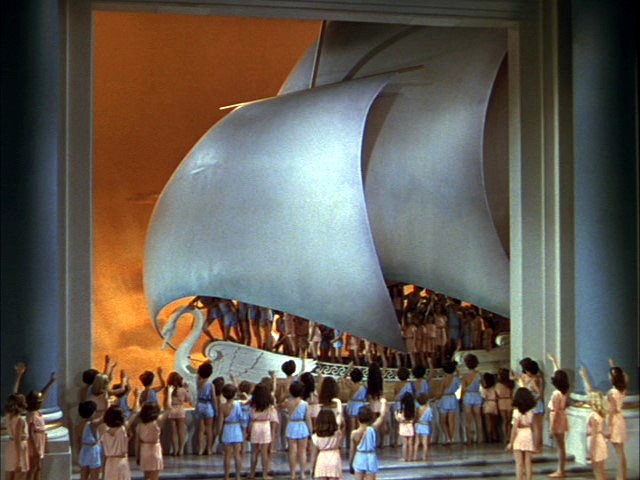 The children whose time has come board a graceful alabaster ship with silver sails and the figurehead of a swan. As the boat pulls away from the quay into a golden sea and sky, the children left behind, still awaiting their turn, bid their friends a joyous bon voyage. The departing passengers fix their eyes on the far horizon, and they sing:
The children whose time has come board a graceful alabaster ship with silver sails and the figurehead of a swan. As the boat pulls away from the quay into a golden sea and sky, the children left behind, still awaiting their turn, bid their friends a joyous bon voyage. The departing passengers fix their eyes on the far horizon, and they sing: